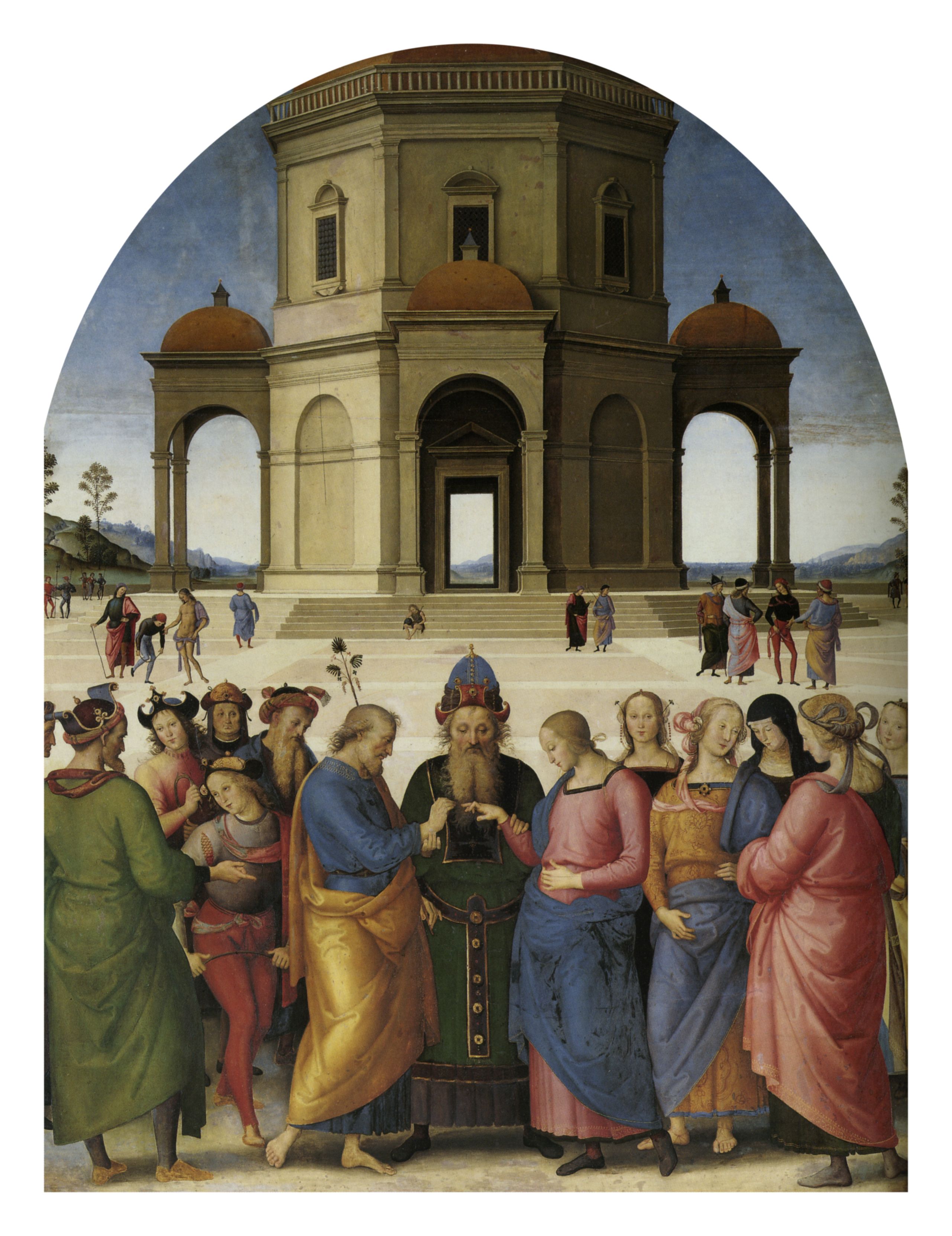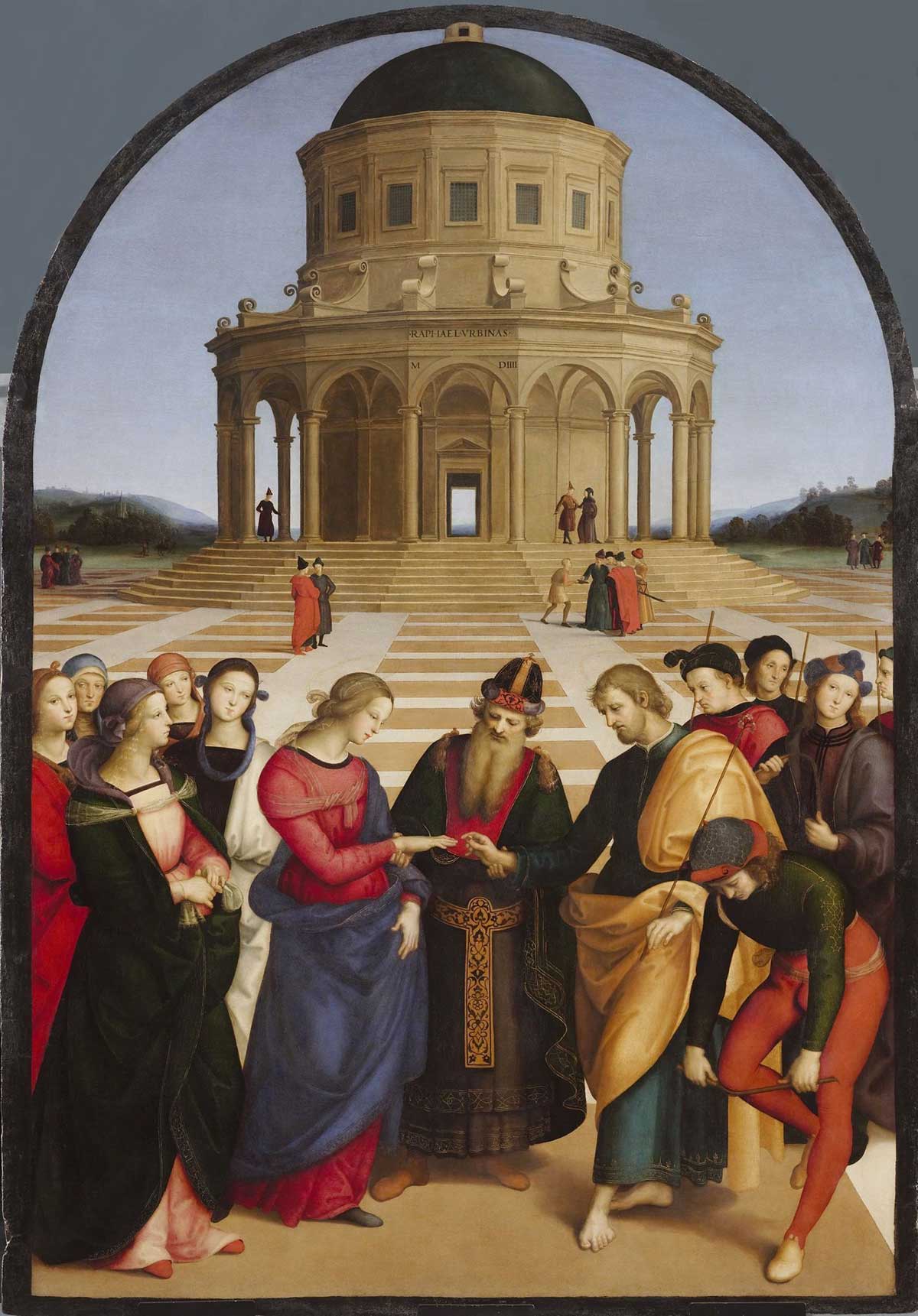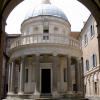Pietro Perugino, The Delivery of Keys to St Peter (1481-1482)
Pietro Perugino (1446-1523) depicted the moment in Matthew 16 in which Christ named Peter as the rock upon which his Church would be built, and promised to him the keys to the heavenly kingdom. Painted in the Sistine Chapel of the Apostolic Palace in Vatican City, the official residence of the pope, the fresco forms part of a series of stories of Jesus’s life on the North wall. This moment is hugely significant to the papacy as it records the creation of their Church, whose leader (the pope) would act as an earthly representative of God.
The artist used a similar backdrop in another biblical painting he executed roughly twenty years after: the ‘Marriage of the Virgin’ (1500-04). Commissioned for the cathedral of Perugia, the painting prominently features the Virgin's engagement ring, which was believed to be kept in the cathedral as a relic. Raphael (1483-1520), a student of Pietro, painted a similar scene of 'The Marriage of the Virgin'.
All three paintings share the same landscape. Through the use of perspective, the lines between the slabs of pavement lead the viewer’s eye to the centre of the image, at which is depicted the Temple of Solomon as a symmetrical, round building. Their architectural style is significant as it reflects the interest in antique buildings, revived in Italy during this period. Classical examples of circular temples still survived in Rome and inspired the design of new buildings during the Renaissance, such as Bramante’s Tempietto. These paintings and buildings thus reveal what Renaissance artists saw to be the ideal form of architecture.
perugino- marriage of Virgin.jpg

Pietro Perugino, ‘Marriage of the Virgin’ (1500-04, Musée des Beaux-Arts, Caen). Public domain, wikimedia commons.
Raphael-Marriage of the Virgin.jpg

Raphael, 'The Marriage of the Virgin' (1504, Pinacoteca di Brera, Milan). For more on this painting, see this Khan Academy video. © 2018 Pinacoteca di Brera

